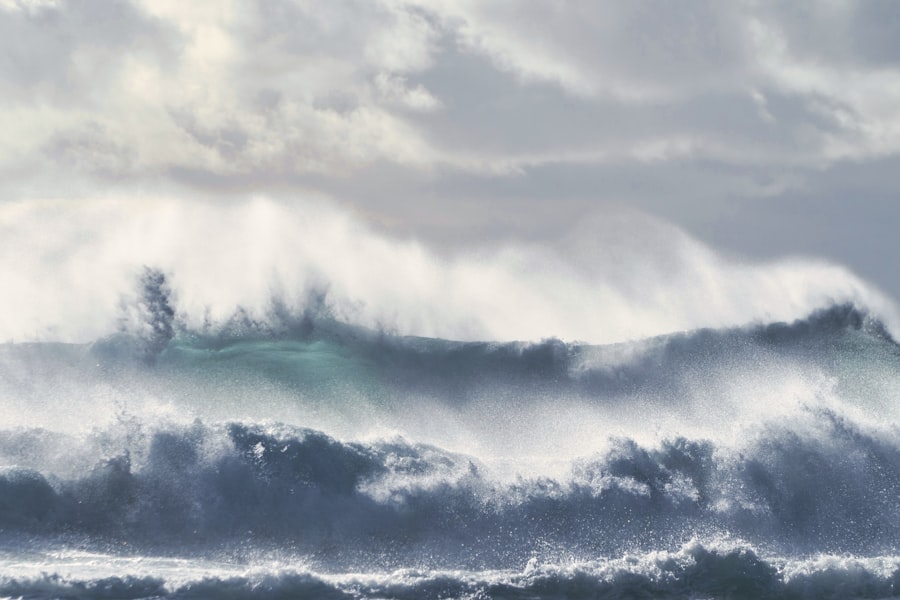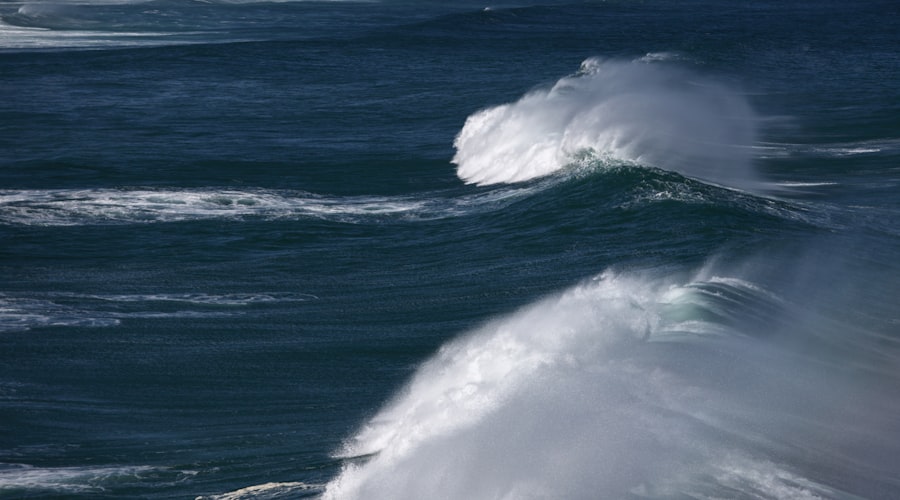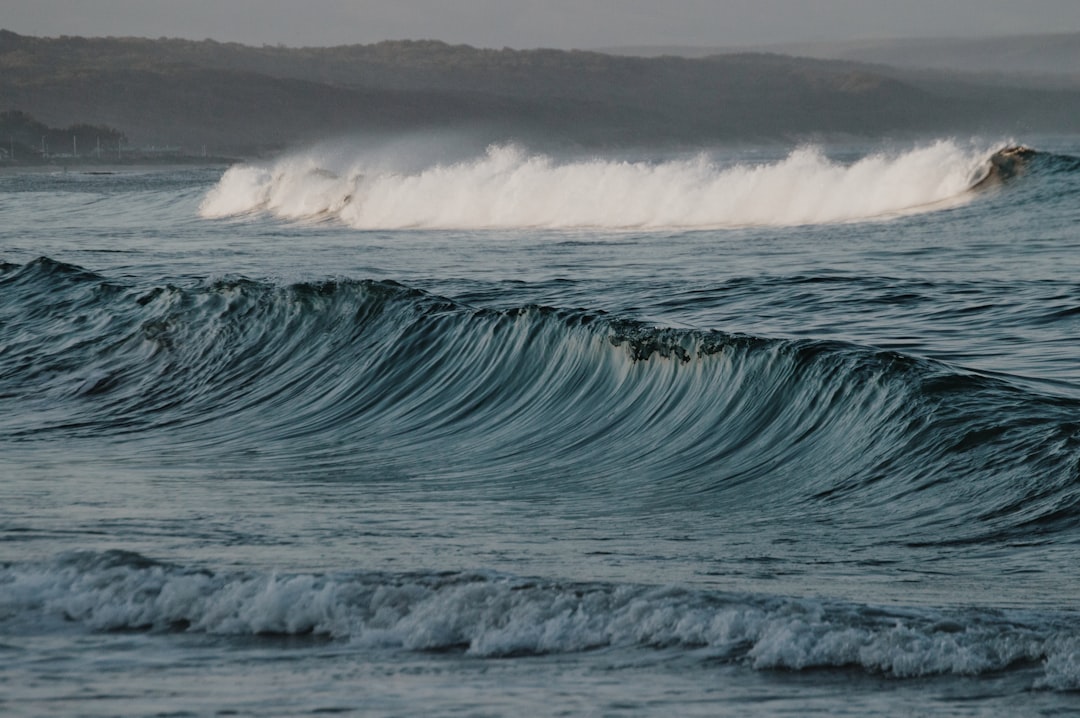The Drake Passage, a body of water situated between the southern tip of South America and Antarctica, is renowned for its tumultuous seas and unpredictable weather patterns.
Named after the English explorer Sir Francis Drake, who navigated these waters in the late 16th century, the passage is often characterized by its fierce winds and towering waves, making it one of the most challenging areas for navigation in the world.
The significance of the Drake Passage extends beyond its geographical location; it plays a vital role in global ocean circulation and climate regulation. The confluence of the Atlantic, Pacific, and Southern Oceans creates a unique environment that influences weather patterns not only in the surrounding regions but also across the globe. As such, understanding the dynamics of this passage is essential for mariners, researchers, and environmentalists alike.
The unpredictable nature of the Drake Passage necessitates a keen awareness of wave height forecasts, which can significantly impact maritime operations and safety.
Key Takeaways
- Drake Passage is a treacherous body of water located between South America’s Cape Horn and the South Shetland Islands of Antarctica.
- Wave height forecasts are crucial for mariners navigating through Drake Passage due to its notorious reputation for extreme weather and rough seas.
- Understanding wave height forecasts involves analyzing data from various sources such as satellite observations, weather models, and historical wave data.
- Factors affecting wave height in Drake Passage include wind speed, duration, and direction, as well as the presence of storms and ocean currents.
- Current wave height in Drake Passage can reach up to 30 feet, making it one of the most challenging maritime routes in the world.
Importance of Wave Height Forecast
Wave height forecasts are crucial for anyone navigating the Drake Passage, as they provide essential information about the conditions that vessels may encounter. Mariners rely on these forecasts to make informed decisions regarding their routes, ensuring both safety and efficiency during their journeys. High wave heights can pose significant risks to ships, leading to potential capsizing or damage to cargo.
Therefore, accurate predictions are not merely beneficial; they are imperative for safeguarding lives and property at sea. Moreover, wave height forecasts are integral to the planning and execution of research expeditions in the Antarctic region. Scientists studying marine ecosystems or climate change rely on these forecasts to determine optimal times for fieldwork.
The ability to anticipate rough seas allows researchers to schedule their activities when conditions are more favorable, thereby maximizing their chances of success. In this context, wave height forecasts serve as a critical tool for both commercial and scientific endeavors in one of the most remote areas of the planet.
Understanding Wave Height Forecast

Understanding wave height forecasts involves interpreting various meteorological data and oceanographic models that predict sea conditions. These forecasts typically express wave height in terms of significant wave height, which is defined as the average height of the highest one-third of waves over a given period. This measurement provides a more accurate representation of sea conditions than simply reporting the maximum wave height, as it accounts for the variability inherent in ocean waves.
Forecasts are generated using a combination of satellite observations, buoy data, and numerical weather prediction models. Satellite imagery allows meteorologists to monitor large-scale weather patterns and sea surface conditions, while buoys provide real-time data on wave heights and wind speeds. By integrating these data sources into sophisticated models, forecasters can predict how wave heights will evolve over time, taking into account factors such as wind direction, atmospheric pressure, and ocean currents.
Factors Affecting Wave Height in Drake Passage
| Factor | Description |
|---|---|
| Wind Speed | The speed of the wind directly affects the height of waves in Drake Passage. |
| Wind Direction | The direction from which the wind is blowing can impact the size and shape of waves. |
| Water Depth | Shallower waters can lead to larger and more powerful waves. |
| Underwater Topography | The shape and features of the ocean floor can influence wave height and behavior. |
| Storms and Weather Systems | Intense storms and weather patterns can lead to extreme wave conditions in the Drake Passage. |
Several factors contribute to the wave height experienced in the Drake Passage, making it a complex environment for forecasting. One primary factor is wind speed and direction; strong winds can generate larger waves by transferring energy to the water surface. In the Drake Passage, prevailing westerly winds often create formidable swells that can reach impressive heights.
The interaction between these winds and ocean currents further complicates wave dynamics, leading to unpredictable conditions. Another significant factor is the geography of the passage itself. The relatively narrow width of the Drake Passage funnels oceanic energy, amplifying wave heights as they travel through this constricted area.
Additionally, underwater topography plays a role; variations in seabed depth can cause waves to steepen or break unexpectedly. These geographical features combined with atmospheric conditions create a unique environment where wave heights can change rapidly, necessitating constant monitoring and accurate forecasting.
Current Wave Height in Drake Passage
As of the latest reports, current wave heights in the Drake Passage vary significantly due to ongoing weather patterns. Recent observations indicate that wave heights have reached levels typical for this time of year, with some areas experiencing swells exceeding 5 meters (16 feet). These conditions are influenced by a series of low-pressure systems moving through the region, generating strong winds that contribute to elevated wave activity.
Mariners operating in these waters must remain vigilant as conditions can change swiftly. The combination of high winds and substantial wave heights creates a challenging environment for navigation. It is essential for vessels to stay updated on real-time data to ensure safe passage through this notoriously rough stretch of ocean.
The current state of wave heights serves as a reminder of the Drake Passage’s reputation as one of the most formidable maritime routes in existence.
Wave Height Forecast Methodology

The methodology behind wave height forecasting involves a multi-faceted approach that combines observational data with advanced modeling techniques. Meteorologists begin by collecting data from various sources, including satellite imagery, buoys stationed throughout the passage, and weather stations on land. This data provides a comprehensive view of current conditions, including wind speed, direction, and existing wave heights.
Once this data is gathered, it is input into numerical weather prediction models that simulate oceanic and atmospheric interactions. These models take into account various factors such as temperature gradients, pressure systems, and historical weather patterns to project future wave heights. Forecasters then analyze these outputs alongside real-time observations to refine their predictions.
This iterative process ensures that forecasts remain as accurate as possible, allowing mariners to make informed decisions based on the latest available information.
Expected Wave Height for Tomorrow
Looking ahead to tomorrow’s forecast for the Drake Passage reveals a continuation of challenging conditions. Meteorological models predict that wave heights will remain elevated due to persistent westerly winds associated with an approaching storm system. Expected significant wave heights may reach up to 6 meters (20 feet) in some areas, particularly where wind speeds are highest.
Mariners planning to navigate through the passage should prepare for rough seas and consider adjusting their schedules accordingly. The forecasted conditions underscore the importance of staying informed about changing weather patterns and being ready to adapt plans as necessary. With such high wave heights anticipated, safety should be the top priority for all vessels operating in this unpredictable maritime environment.
Safety Precautions for Mariners
Given the inherent dangers associated with navigating the Drake Passage during periods of high wave activity, mariners must take specific safety precautions to mitigate risks. First and foremost, thorough preparation is essential; vessels should be equipped with all necessary safety gear, including life jackets, flares, and emergency communication devices. Regular drills should be conducted to ensure that crew members are familiar with emergency procedures.
Additionally, mariners should closely monitor weather forecasts and be prepared to alter their routes or schedules based on changing conditions. It is advisable to maintain communication with other vessels in the area and with maritime authorities who can provide real-time updates on sea conditions. By remaining vigilant and proactive in their approach to safety, mariners can navigate the challenges posed by the Drake Passage more effectively.
Impact on Shipping and Travel
The unpredictable nature of wave heights in the Drake Passage has significant implications for shipping and travel in this region. For commercial shipping companies, high waves can lead to delays in transit times and increased operational costs due to potential damage to cargo or vessels. These challenges necessitate careful planning and risk assessment when scheduling voyages through this critical maritime route.
For travelers embarking on cruises or research expeditions to Antarctica, rough seas can impact itineraries and overall experiences. Many cruise lines monitor wave height forecasts closely to ensure passenger safety and comfort during voyages. In some cases, itineraries may be adjusted or ports of call changed based on anticipated sea conditions.
Understanding these impacts highlights the importance of accurate wave height forecasting not only for safety but also for maintaining operational efficiency within maritime industries.
Potential Weather Conditions Affecting Wave Height
Several weather conditions can influence wave height in the Drake Passage beyond just wind speed and direction. Low-pressure systems are particularly impactful; as these systems move through the region, they can generate strong winds that lead to increased wave activity. Additionally, frontal systems—boundaries between different air masses—can create turbulent conditions that exacerbate existing waves.
Temperature variations also play a role; warmer air can lead to more intense storms while colder air may stabilize conditions temporarily. Seasonal changes further complicate forecasting efforts; during certain times of year, such as winter months in the Southern Hemisphere, storms tend to be more frequent and intense. Understanding these potential weather influences is crucial for accurate forecasting and effective navigation through this challenging maritime environment.
Conclusion and Recommendations
In conclusion, navigating the Drake Passage requires a comprehensive understanding of wave height forecasts and their implications for maritime operations. The unpredictable nature of this body of water underscores the importance of accurate forecasting methodologies that integrate observational data with advanced modeling techniques.
To enhance safety and operational efficiency in this challenging environment, it is recommended that mariners prioritize thorough preparation and continuous monitoring of weather forecasts. By staying informed about expected wave heights and potential weather influences, vessels can navigate the Drake Passage more safely while minimizing risks associated with high seas. Ultimately, fostering a culture of safety awareness among mariners will contribute significantly to successful navigation through one of the world’s most formidable maritime routes.
If you’re planning a journey through the Drake Passage, it’s crucial to stay informed about the wave height forecast to ensure a safe voyage. For those interested in understanding more about the dynamic conditions of this notorious stretch of water, you might find this related article insightful. It provides valuable information on navigating the challenging waters and what to expect in terms of weather patterns, which can be particularly useful for mariners and adventurers alike.
WATCH NOW! Drake Passage: Earth’s Deadliest Waters Revealed
FAQs
What is the Drake Passage?
The Drake Passage is the body of water between the southern tip of South America and the northern tip of the Antarctic Peninsula. It is known for its rough seas and challenging sailing conditions.
What is wave height forecast?
Wave height forecast is a prediction of the height of waves in a particular area over a specific period of time. It is used by sailors, surfers, and other marine activities to plan and prepare for the conditions they will encounter.
Where can I find the wave height forecast for the Drake Passage tomorrow?
You can find the wave height forecast for the Drake Passage tomorrow from various sources such as the National Weather Service, marine weather websites, and sailing or boating apps.
What factors are considered when forecasting wave height?
When forecasting wave height, meteorologists consider factors such as wind speed and direction, atmospheric pressure, and the topography of the ocean floor. These factors can all influence the size and strength of waves in a particular area.
Why is it important to know the wave height forecast for the Drake Passage?
It is important to know the wave height forecast for the Drake Passage because of its reputation for rough seas. Sailors and other marine activities need to be prepared for the conditions they will encounter in order to ensure safety and successful navigation.
